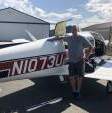Crosswind takeoffs
-
Members Online
- Fly Boomer
- Slick Nick
- CAV Ice
- saltydecimator
- CL605
- Bpshea50
- Bartman
- eman1200
- buddy
- ta2too
- rahill
- ZentRose
- Robert C.
- Greg Ellis
- Schllc
- Utah20Gflyer
- Hamburglar
- Shadrach
- Marc B
- Arthur Cofano
- BDPetersen
- FlyboyKC
- Austintatious
- TCC
- slowflyin
- Ricky_231
- EricJ
- tankles
- DXB
- Echo
- Rogerg
- richardbrochu27
- prillayo03
- Todd1
- Planegary
- haymak3r
- 00-Negative
- TheAv8r
- pilot_jb
- 1980Mooney
- Stubby


Recommended Posts
Join the conversation
You can post now and register later. If you have an account, sign in now to post with your account.